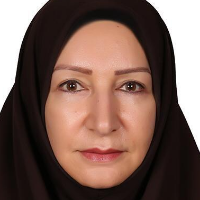Genetic diversity analysis in Iranian St. John's wort accessions (Hypericum perforatum L.) using inter simple sequence repeats markers
Author(s):
Abstract:
Hypericum perforatum L. is a medicinal plant abounding with secondary metabolites which have clinically proven anti-inflammatory, antiviral, antifungal, and antidepressant activities. In this study, the genetic diversity of 29 accessions from eight populations collected from eight provinces (Azerbaijan, Gilan, Tehran, Semnan, Kurdistan, Lorestan, Golestan and Ardabil) were assessed using Inter Simple Sequence Repeat (ISSR) markers. Twelve primers containing different simple sequence repeats (microsatellite) were used. The primers produced between 11 to 26 bands. Totally the markers produced 221 amplification products, out of which 196 bands were polymorphic. The results showed that polymorphism information content (PIC) of primers was 0.37. Primers 841Y-UBC and UBC-807 had the highest PIC (0.41). Cluster analysis based on Jacquard’s similarity coefficient using Unweight Pair Group Method with Arithmetic mean (UPGMA) indicated wide range of diversity across the studied accessions. The highest genetic distance was observed between 23335 (Ardabil) with 17982 and 14206 (both of West Azerbaijan) accessions and between 133337 and 17982 accessions (Gilan and Azerbaijan) revealing closer genetic relationship. The least genetic distance was observed between 13180 and 13347 from Gilan. Molecular variation within and among the populations (within and among provinces) were estimated 78% and 22% of total variance, respectively. The distribution reflects high genetic diversity between the accessions in each geographical area. The results revealed that ISSR markers could be efficiently used for genetic differentiation of the St. John’s Wort accessions.
Keywords:
Language:
Persian
Published:
Iranian Journal of Rangelands Forests Plant Breeding and Genetic Research, Volume:20 Issue: 1, 2012
Page:
14
https://magiran.com/p1043999
مقالات دیگری از این نویسنده (گان)
-
The effect of environmental conditions on the functional traits of the endemic species Seseli olivieri Boiss.
Mina Rabie*, Younes Asri,
Nova Biologica Reperta, -
Comparison of physicochemical properties of peppermint (Mentha piperita L.) distillate obtained from dry and fresh plant in vegetative and flowering stages and in different distillate to water ratios
Reyhaneh Taebnia, *, Ali Mohammadi Torkashvand, Ali Ashraf Jafari, Sepideh Kalate Jari
Iranian Journal of Horticaltural Sciences, -
Antioxidative and pigment response of Japanese barberry (Berberis thunbergii) to Zinc oxide and Cerium dioxide nano elicitors
Hadiseh Sadeghi, *, Farhad Habibzadeh, Sedigheh Fabriki Ourang
Plant Production, -
The Genetic Diversity of Iranian and Foreign Aegilops tauschii Accessions using SSR Markers
Nessa Niko, *, Sedigheh Fabriki-Ourang, Aliashraf Mehrabi
Journal of Genetics,



